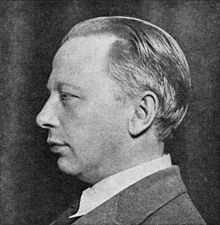Kurt Atterberg

Kurt Magnus Atterberg (12 December 1887 – 15 February 1974) was a Swedish composer and engineer. He is best known for his symphonies, operas and ballets. He cited the Russians, Brahms and Reger as his musical influences, and his works combine their compositional styles with Swedish folk tunes.
Biography
Atterberg was born in Gothenburg. His father was Anders Johan Atterberg, engineer and brother of famous chemist Albert Atterberg. His mother, Elvira Uddman, was the daughter of a famous male opera singer.
In 1902, Atterberg began learning the cello, having been inspired by a concert by the Brussels String Quartet, featuring a performance of Beethoven's eighth string quartet. Six years later he became a performer in the Stockholm Concert Society, now known as the Royal Stockholm Philharmonic Orchestra, as well as publishing his first completed work, the Rhapsody for Piano and Orchestra, opus 1. His String Quartet no. 1 in D Major, op. 2, soon followed.
While already studying electrical engineering at the Royal Institute of Technology, Atterberg also enrolled at the Royal College of Music, Stockholm in 1910 with a score of his Rhapsody and an incomplete version of his Symphony no. 1. There he studied composition and orchestration under the composer Andreas Hallén. He earned his engineering diploma a year later, as well as being awarded a State Music Fellowship. He made his conducting debut at a concert in Gothenburg in 1912, premiering his first symphony and the Concert Overture in A Minor, op. 4.
Although continuing to compose and conduct, Atterberg enjoyed a wholesome career in several different organisations. He accepted a post at the Swedish Patent and Registration Office in 1912, going on to become a head of department in 1936, and working there until his retirement in 1968. He co-founded the Society of Swedish Composers in 1918, alongside other prominent composers such as Ture Rangström, Wilhelm Stenhammar and Hugo Alfvén. Six years later he was elected president of the society, maintaining the position until 1947. At a similar time, he became president of the STIM, which he also helped to found, and of which his presidency lasted until 1943. Other jobs taken on by Atterberg included his work as a music critic for the Stockholms Tidningen from 1919 to '57, and as secretary of the Royal Swedish Academy of Music from 1940 to '53.
At the age of 86, Atterberg died on 15 February 1974 in Stockholm, and was buried there in the Northern Cemetery.
Works
As have many composers, such as Beethoven and Dvořák, Atterberg composed nine symphonies and, like Beethoven's, the ninth of which (entitled "Sinfonia Visionaria") was scored for orchestra and chorus with vocal soloists. His output also includes six concertante works (including his Rhapsody, op. 1, and a cello concerto), nine orchestral suites, three string quartets, five operas and two ballets.
For the 100th anniversary of the death of Schubert in 1928, the Columbia Gramophone Company sponsored a worldwide symphony competition in which composers were to write a symphony completing, or inspired by, Schubert's "Unfinished" Symphony. Atterberg entered his Symphony no. 6 in C Major, op. 31, and was awarded first prize, winning $10,000. The symphony, which was later known as the "Dollar Symphony", was recorded by Sir Thomas Beecham that year, and later by Arturo Toscanini in 1943, during an NBC Symphony Orchestra broadcast concert; a performance which Atterberg praised on hearing the recorded broadcast.[1]
On February 22 2005, CPO Records released a complete box set of recordings of Atterberg's symphonies, as well as the symphonic poem "Älven - Från Fjällen till Havet" ("The River - From the Mountains to the Sea"). The recordings were performed by four different German orchestras, including the Radio-Sinfonie-Orchester Frankfurt, all conducted by Finnish conductor Ari Rasilainen.[2]
Personal life
Atterberg married twice, the first time being in 1915 to Ella Peterson, a pianist. They divorced eight years later. His second marriage was to Margareta Dalsjö in 1925, which lasted until her death in 1962.
References
- ^ http://books.google.com/books?id=wBD_ujAW520C&pg=PA117&lpg=PA117&dq=Kurt+Atterberg,+Toscanini,+Mortimer+Frank&source=bl&ots=L7VLc_TCbX&sig=20kGEpQCXIgpcVdLjKAvkovh1oE&hl=en&ei=AetaTPSWFsP58Ab_25XbAg&sa=X&oi=book_result&ct=result&resnum=1&ved=0CAYQ6AEwAA#v=onepage&q&f=false
- ^ http://www.amazon.com/Kurt-Atterberg-Symphonies-Box-Set/dp/B0007ACVDW
Other sources
- Kube, Michael (1999). Kurt Atterberg (1887-1974) An Overview of his Life and Work. Classic Produktion Osnabrück.
External links
- Kurt Atterberg at Find-A-Grave
- Free scores by Kurt Atterberg at the International Music Score Library Project (IMSLP)
- Article on Atterberg's Third Symphony (Accessed 17 May 2011)
